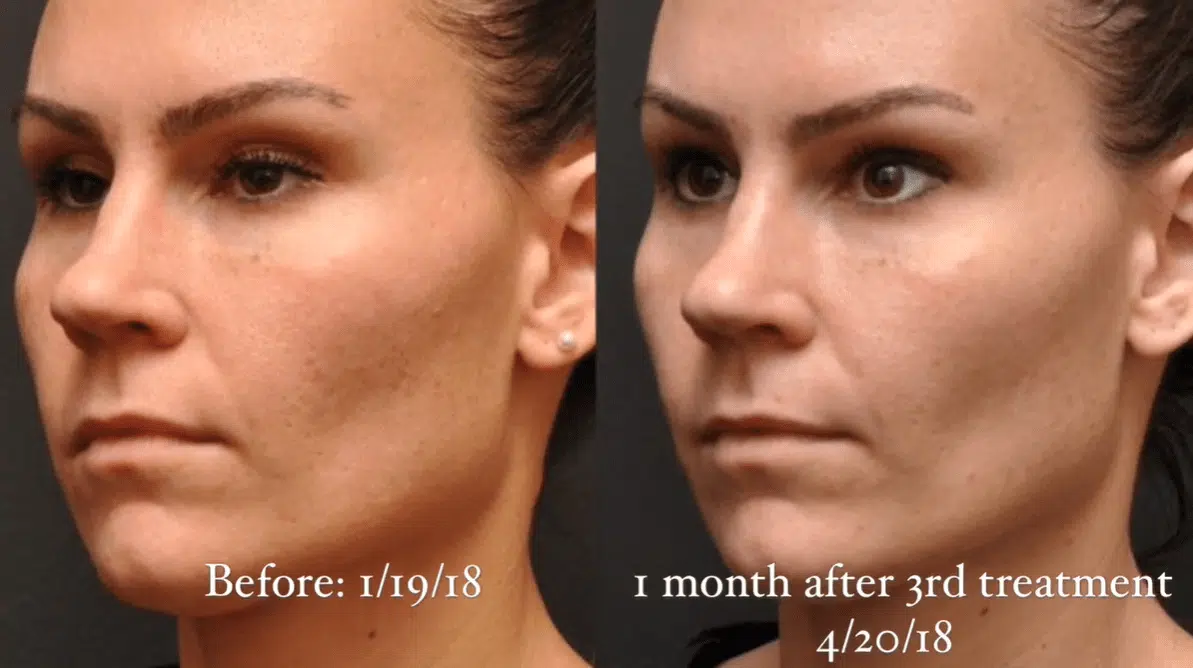
Home / Procedures / Microneedling

Scar Reduction
Microneedling can diminish the appearance of acne scars and other types of skin imperfections.
Youthful Skin
Collagen induction through microneedling leads to firmer, plumper, and more youthful-looking skin.
Safe and Effective
Microneedling is a safe and effective treatment for skin rejuvenation, with minimal downtime.
Microneedling (also known as collagen induction therapy) is a minimally invasive treatment to rejuvenate the skin. A device with fine needles creates tiny punctures in the top layer of the skin, which triggers the body to create new collagen and elastin. Results can include improved texture and firmness, as well as a reduction in wrinkles, fine lines, scars, pore size, and stretch marks. Microneedling may also be combined with a topical treatment, like Growth Factors, or another vitamin-rich serum. Some procedures like Morpheus8 combine microneedling with radiofrequency for improved results.
We utilize an electronic device called the Mesopen which allows for customized treatments through adjustable needle length for the best possible results. We also recommend the use of Growth Factors Therapy with your treatment. Growth Factors therapy involves the application of your own platelets to the area treated to maximize healing and collagen growth using your own growth factors. The Growth Factor is obtained by drawing a small amount of blood and processing it to concentrate the platelets which are rich in growth factors.
The main differences are who performs the treatment and the depth that the needle penetrates the skin.
Cosmetic microneedling can be done at home or with an esthetician and is typically done with a manual roller that creates small superficial channels into the uppermost parts of the skin’s epidermis (your skin’s outer layer). This is a great treatment for maintenance and may help with fine lines, tone, and texture.
Medical microneedling must be done with a physician or nurse practitioner, or a nurse being supervised directly by a doctor! A motorized pen-shaped device is used to create small superficial channels into the dermis (your skin’s deeper layers) and triggers your body’s natural healing response to start producing collagen and elastin, which makes it possible to treat fine lines, wrinkles, hyperpigmentation, melasma, acne, and other scarring.
Why choose Dr. Donath — Double Board Certified Plastic Surgeon
– Real Patient
The Staff & Doctor were very understanding & did such a good job.
I would recommend them to any one.
You can expect mild to moderate redness, minimal swelling and bruising for the first few days. Your skin may feel warm and tighter than usual and that will also subside after the first few days. Do NOT apply makeup or sunscreen for at least 24 hours after treatment. Also, avoid sun exposure, vigorous exercise, and potentially skin irritating products (retinoids, glycolic acids, etc.) for the first 3 days after treatment.

Microneedling with Platelet Rich Plasma
Generally, best results are achieved with 4-6 treatments spaced 4-6 weeks apart (8-10 weeks apart for scars).
A variety of excellent post-treatment care items are available — be sure to ask your provider which would be best for you!
If you live in the states of Ohio or Kentucky, Donath Facial Plastic Surgery offers microneedling among its services. For a full list of services, please visit our Locations page.
Are you sure we can’t help?
"*" indicates required fields